How to Transport Trees Long Distance
- September 19, 2024
- 0 comment
Transport trees over long distances is an intricate task that requires careful planning, expertise, and attention to detail. Transport trees, especially large ones, are living organisms that demand specific conditions to remain healthy and intact during transit.
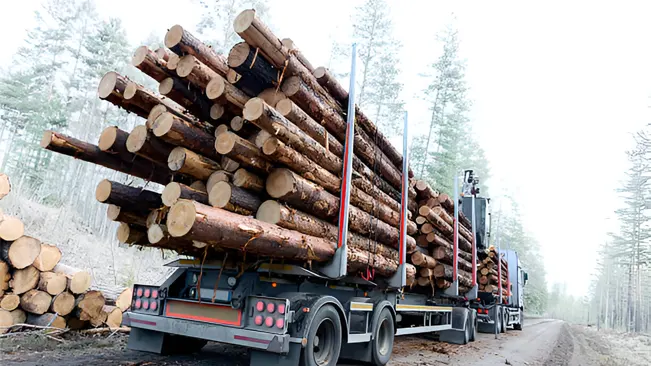
Whether you’re a homeowner relocating a cherished tree or a landscaping professional, ensuring that your tree arrives in good condition is essential for its survival and growth in its new environment. In this guide, we’ll walk through everything you need to know about how to transport trees long distance, offering expert advice and practical steps to make the process smooth and successful.
Why Transport Trees Can Be Tricky
Transport trees are delicate despite their size. They rely on a delicate balance of water, nutrients, and root systems to stay alive. When uprooting a tree, this balance is disrupted, putting the tree at risk of transplant shock, which can lead to stunted growth or even death. Moreover, transport trees over long distances exposes it to various environmental factors like temperature changes, wind, and physical damage that can further affect its health.
The complexity increases with the size of the tree, the distance it needs to travel, and the conditions of both the starting and ending locations. That’s why a well-thought-out plan is crucial for success.
Step-by-Step Process for Transport Trees Long Distance
Transport trees long distance isn’t just about digging up the tree and loading it onto a truck. It involves a systematic approach that takes into account the health of the tree, transportation logistics, and the replanting process.
1. Evaluate the Tree
Before you even think about moving the tree, it’s crucial to assess whether it’s worth transport. Factors to consider include the species, size, age, and health of the tree.
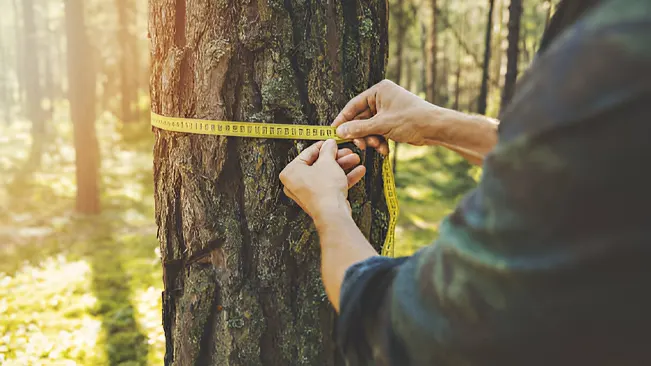
- Species: Some trees are more resilient to transplanting than others. For instance, younger trees generally handle the process better than older ones.
- Size: The larger the tree, the more difficult it will be to move. Large trees have extensive root systems that are challenging to preserve during the uprooting process.
- Age: Older trees tend to be more established, with deeper and more widespread roots, making them more susceptible to transplant shock.
- Health: Only healthy trees should be considered for long-distance transport. A sick or diseased tree may not survive the stress of moving.
If the tree is not in good condition, it might be better to plant a new one at your destination instead of transport an existing one.
2. Planning the Move
Proper planning is key to ensuring a successful transport trees. Consider the following elements:
- Time of Year: The best time to move most transport trees is during their dormant season, typically in late fall or early spring. This is when the tree is not actively growing and can handle the stress of being uprooted.
- Permit Requirements: Depending on your location, transport trees might require permits. It’s important to check local regulations to avoid any legal issues during the move.
- Transport Route: Plan the most efficient route for the move. Avoid bumpy roads or areas with low-hanging wires or bridges that could interfere with the safe transport of the tree.
3. Preparing the Tree for Transport
Once you’ve planned the move, it’s time to prepare the tree for transportation. Proper preparation will reduce the risk of damage during transit.
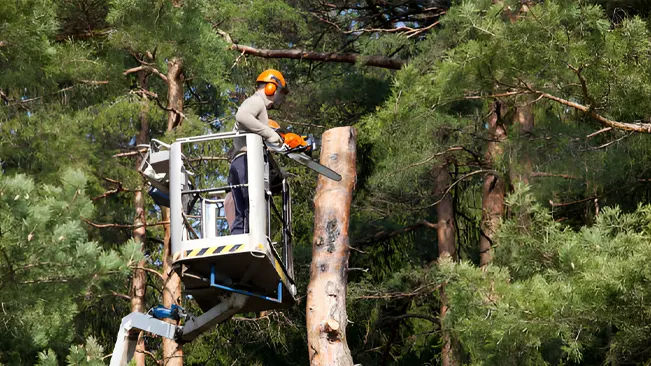
- Prune the Tree: Remove any dead or damaged branches to prevent them from breaking off during the move. Additionally, trimming the canopy can reduce the tree’s water needs and stress.
- Water the Tree: Thoroughly water the tree a day or two before the move. This helps keep the roots hydrated during the transport process.
- Root Ball Preparation: The most critical part of the tree is its root system. Dig a trench around the tree, starting about three feet away from the trunk, to preserve as much of the root system as possible. The depth of the trench should match the size of the tree. For larger trees, the trench may need to be several feet deep.
4. Loading the Tree
Loading the tree onto the transport vehicle requires precision to avoid damaging the roots or branches. This process can vary depending on the size of the tree and the equipment being used.
- For Smaller Trees: With the root ball wrapped and secured, the tree can be lifted onto the truck by hand or with the help of a tree spade.
- For Larger Trees: If you’re working with a larger tree, use a crane or heavy-duty equipment to lift it onto the truck. Ensure the tree is placed
port vehicle without putting pressure on the trunk, branches, or root ball. It’s crucial to prevent any unnecessary movement during transit, as it could cause severe damage to the tree’s structure or roots.
- Strapping the Tree: Use strong ropes, straps, or bungee cords to secure the tree to the truck. Make sure to tie down both the trunk and the root ball so they stay firmly in place throughout the journey. Straps should be tight enough to prevent shifting but not so tight that they damage the bark or cause abrasions to the tree.
5. Choosing the Right Equipment
To transport trees long distance, you’ll need the appropriate equipment. The tools and vehicles required will depend on the size of the tree and the distance it needs to travel.
Tree Spade or Backhoe
A tree spade is a specialized piece of machinery designed specifically for uprooting and transport trees with minimal disruption to their root systems. It works by digging around the tree, cutting through the soil and roots, and creating a neat root ball, which can then be lifted and transported without damaging the tree’s vital structures. For larger trees with more extensive root systems, heavier equipment like a backhoe may be necessary to handle the size and weight of the root ball while ensuring the tree’s stability during the move.

Transport Vehicle
You’ll need a large flatbed truck or trailer capable of supporting the weight and size of the tree, including its root ball and canopy. It’s critical to properly secure the tree using heavy-duty straps or ropes to prevent any movement during the journey, as even slight shifts can cause significant damage to the roots, branches, or trunk. Additionally, ensuring the tree is placed in a stable position on the vehicle will help avoid stress to the tree and ensure its safe arrival at the destination.
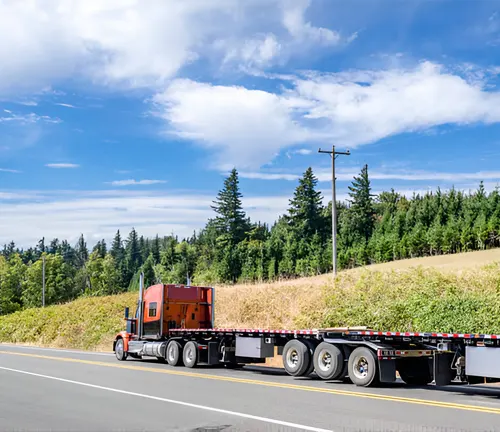
Crane (if needed)
For especially large or heavy trees, a crane may be essential to safely lift and place the tree onto a truck or trailer without risking damage to the tree or surrounding property. Cranes provide precise control when moving trees, minimizing stress on the root ball and ensuring the branches and trunk are not harmed during the lift.
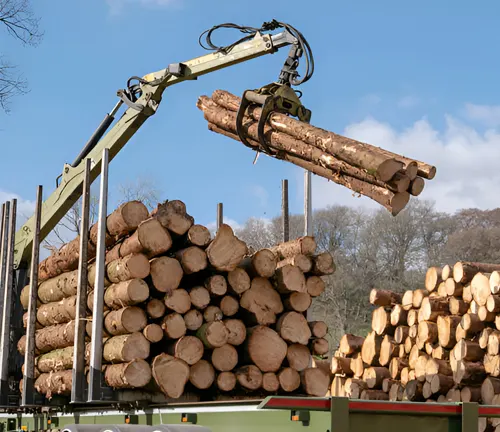
6. Transport the Tree
Once the tree is securely loaded, it’s time to begin the transport process. However, it’s essential to keep a few critical factors in mind to ensure the tree arrives at its destination in good condition.
- Drive Slowly and Carefully: Trees are delicate cargo. Drive at moderate speeds to minimize jostling and avoid sudden stops or sharp turns that could cause the tree to shift or be damaged. If you’re traveling a long distance, consider taking frequent stops to inspect the tree, ensuring the root ball is still secured and the tree hasn’t moved.
- Monitor the Weather: Transport trees long distance in extreme weather conditions, such as excessive heat or cold, can harm them. Try to transport the tree when the weather is mild, and avoid days with heavy rain, snow, or wind that could make the journey difficult and dangerous.
- Ventilation: If the tree is fully enclosed during transport (in the case of a covered truck), ensure there is enough ventilation for the tree to “breathe.” Trees release moisture and gases through their leaves and bark, so proper airflow is necessary to maintain a stable environment inside the transport vehicle.
7. Unloading the Tree
When you’ve reached your destination, the unloading process must be just as careful as the loading. Handling the tree improperly at this stage can undo all the careful work you’ve done up until now.
- Positioning the Tree: Before unloading, make sure the planting site is ready. The hole should be pre-dug and large enough to accommodate the root ball, with plenty of space for the roots to spread out. The depth of the hole should be such that the tree is planted at the same level it was in its original location planting too deeply can smother the roots, while planting too shallow can expose them to the elements.
- Unwrapping the Root Ball: Once the tree is in position next to the hole, gently unwrap the burlap or other protective material from the root ball. Be careful not to disturb the roots too much during this process, as they will still be fragile after the move.
- Lowering the Tree: For smaller trees, you may be able to lower the tree into the hole by hand. For larger trees, use equipment like a crane or backhoe to carefully lift and place the tree into the prepared hole. Make sure the tree is positioned upright and straight before you begin filling the hole.
8. Replanting the Tree
After the tree is placed in the hole, the final stage is replanting, which involves more than just filling in the soil.
- Backfill the Hole: Begin by filling the hole with soil, making sure to pack it gently around the root ball to remove any air pockets. Don’t pack the soil too tightly, as compacted soil can prevent water and nutrients from reaching the roots. Water the soil thoroughly as you go, helping to settle it and give the roots immediate access to moisture.
- Watering: After the tree is replanted, water it deeply to help the roots establish themselves in their new environment. Depending on the size of the tree and the conditions at the new location, you may need to water the tree regularly for several weeks or even months until it is fully established.
- Mulching: Applying a layer of mulch around the base of the tree can help retain moisture, regulate soil temperature, and prevent weeds from competing with the tree for nutrients. Make sure to leave a small gap between the mulch and the trunk to prevent rot.
9. Caring for the Tree Post-Transport
The care doesn’t stop once the tree is replanted. It will need extra attention and care for several months to help it recover from the stress of transport and reestablish its root system.
- Monitor for Transplant Shock: Even with the best care, some trees may experience transplant shock. Signs include wilting, leaf discoloration, or reduced growth. If you notice any of these symptoms, consider consulting an arborist or tree care professional to ensure the tree is healthy.
- Watering Schedule: For the first several weeks, water the tree deeply once or twice a week, depending on the weather and soil conditions. Ensure that the soil remains moist but not waterlogged, as excessive moisture can lead to root rot.
- Support and Staking: If the tree is tall or in an area prone to high winds, consider staking it for added support. Drive stakes into the ground a few feet away from the trunk and use soft straps or cords to secure the tree without damaging the bark. Staking can help the tree remain upright and stable while it establishes its new roots.
- Pruning and Fertilizing: Avoid heavy pruning immediately after transplanting, as this can further stress the tree. If you do need to prune, limit it to removing dead or damaged branches. Fertilizing isn’t necessary right after transplanting, as the tree needs time to adjust to its new environment. If you do decide to fertilize, use a slow-release formula that provides nutrients gradually.
Conclusion
Transport trees long distance is a complex but rewarding task that can give a tree a new lease on life in a different location. With careful planning, the right equipment, and a step-by-step approach, you can successfully move a tree and help it thrive in its new home. By paying attention to the tree’s health, choosing the right time of year, and following proper transport trees and replanting techniques, you can minimize the risk of transplant shock and ensure the tree’s survival for years to come.
Frequently Asked Questions (FAQ)
- Can all trees be transported long distances?
Not all trees are suitable for long-distance transport. Younger, healthy trees generally handle the process better, while older, larger trees with extensive root systems may face challenges during and after transport trees. - What is the best time of year to transport trees?
The best time to transport trees is during their dormant season, typically in late fall or early spring. This period minimizes the risk of transplant shock as the tree is not actively growing. - How do I prevent transplant shock after moving a tree?
To reduce the risk of transplant shock, water the tree deeply after replanting, avoid heavy pruning, and apply mulch to retain moisture. Additionally, monitor the tree for signs of stress, like wilting leaves, and adjust care accordingly. - Do I need a permit to transport large trees?
Depending on local regulations and the size of the tree, you may need a permit to transport it, especially for large or protected species. It’s essential to check with local authorities to ensure compliance with legal requirements. - What equipment is needed to move large trees?
Large trees often require specialized equipment like tree spades or backhoes to dig up the root ball, flatbed trucks or trailers for transportation, and cranes to load and unload the tree safely. Secure straps and protective coverings may also be necessary. - How long does it take for a tree to recover after being transplanted?
Recovery time varies, but it can take anywhere from several months to a year or more for a tree to fully establish its roots in its new location. Regular care, including watering and monitoring, is essential during this period. - How do I prepare the tree before transport trees it?
Proper preparation includes pruning any dead or damaged branches, thoroughly watering the tree, digging a trench around the root system, and carefully wrapping the root ball in burlap or protective material to keep the soil intact during transit. - How do I choose the best location to replant the tree?
When choosing a location for replanting, ensure it has sufficient space for the tree’s root system, proper sunlight, and soil conditions suitable for the tree species. The new location should also be free from obstructions like overhead wires or underground pipes. - What should I do if my tree shows signs of stress after being transported?
If your tree shows signs of stress, such as wilting or yellowing leaves, it’s essential to adjust your care routine. Ensure proper watering, avoid fertilizing too soon, and consider staking the tree for added stability in high-wind areas. - How do I secure the tree during transport to avoid damage?
To secure the tree during transport, use strong straps or ropes to tie the trunk and root ball firmly in place on the truck or trailer. Padding around the branches and trunk can help prevent damage, and driving slowly on smooth roads will reduce the risk of jostling.

Jordan Blake
Forestry AuthorJordan Blake is a forestry expert with over 15 years of experience in arboriculture and community education. Passionate about sustainable forest management, Jordan regularly writes for Forestry.com and Tree Care Magazine. Holding certifications in tree health assessments and urban forestry management, Jordan conducts workshops to educate the public on sustainable practices. Jordan has a degree in Environmental Science and enjoys hiking and photography in their free time.



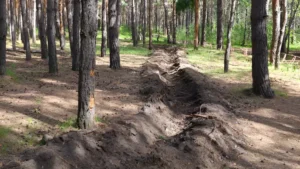
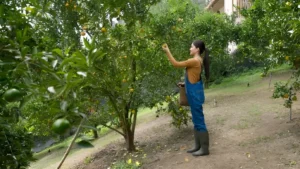



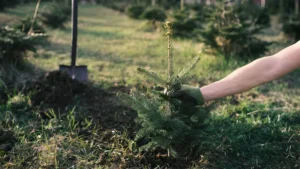

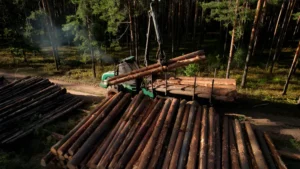
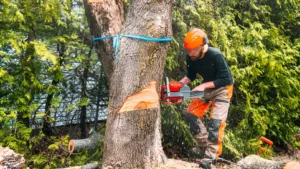

Leave your comment